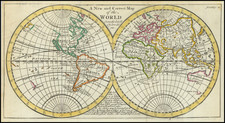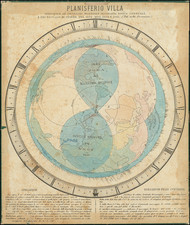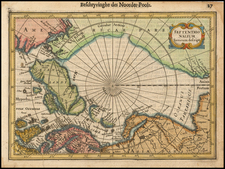Gorgeous old color example of this rare state of De Wit's striking double hemisphere map of the World, with significantly new Cartographic detail in Southeast Asia and to the North of New Zealand.
For this rare state, De Wit adopts the second Sanson model of California s an island, eliminates the Straits of Anian and shows a virtually unknown NW Coast of America. He also provides a significant additional information in Southeast Asia, including the addition of Nova Guinea and Quiri Regio. The brilliant scenes in the corners combine images of the four seasons, the elements and the signs of the zodiac in a well-balanced and natural way. According to Shirley, De Wit's map is one of the most attractive of its time.
While the first edition of this map appears with some frequency on the market, this later state, which includes the privilege in the title, is considerably rarer.
De Wit (1629 ca.-1706) was a mapmaker and mapseller who was born in Gouda but who worked and died in Amsterdam. He moved to the city in 1648, where he opened a printing operation under the name of The Three Crabs; later, he changed the name of his shop to The White Chart. From the 1660s onward, he published atlases with a variety of maps; he is best known for these atlases and his Dutch town maps. After Frederik’s death in 1706, his wife Maria ran the shop for four years before selling it. Their son, Franciscus, was a stockfish merchant and had no interest in the map shop. At the auction to liquidate the de Wit stock, most of the plates went to Pieter Mortier, whose firm eventually became Covens & Mortier, one of the biggest cartography houses of the eighteenth century.

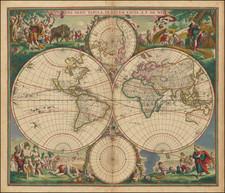








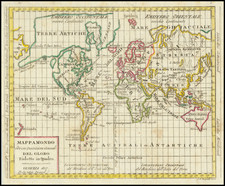
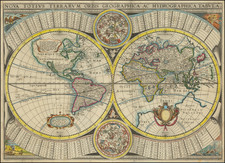
![[ Ancient World ] Aevi Veteris, Typus Geographicus](https://storage.googleapis.com/raremaps/img/small/85526.jpg)
